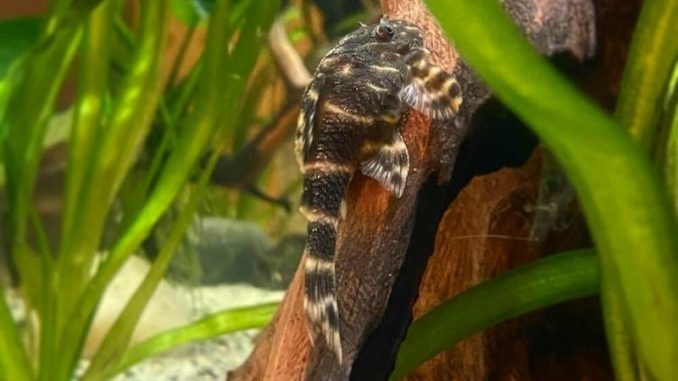
The clown pleco is a freshwater fish of the Loricariidae family. Loricariidae are related to catfish, which gives the clown pleco a catfish-like appearance but with a much smaller body.
Stripe, wave, or ring patterns in striking colors give this fish a a distinct appearance, while its tapered body, soft underbelly, and rasping mouth make it similar to other plecos.
Clown plecos are popular with the aquarist community due to their unique appearance and their low maintenance care needs.
TABLE OF CONTENTS
Clown Pleco Facts & Overview
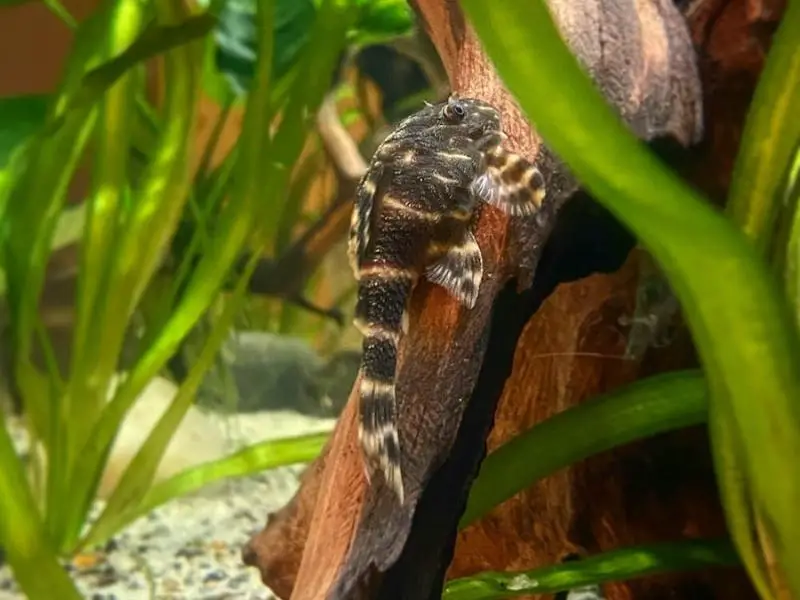
| Scientific name: | Panaqolus maccus |
| Common names | Clown panaque, clown plecostomus, ringlet pleco, clown pleco |
| Distribution: | Venezuela, Colombia, Orinoco river basin |
| Size: | 3.5–4 inches |
| Life expectancy: | 10–12 years |
| Color: | Brown, gray, yellow, red, orange, white, or brown with straight, ringed, or wavy stripe patterns |
| Diet: | Wood eater, Omnivore |
| Temperament: | Peaceful |
| Minimum tank size: | 20 gallons |
| Temperature: | 73– 82°F (23– 28°C) |
| pH: | 6.0–8.0 |
| Hardness: | 8–10 dGH |
| Care level: | Easy |
| Breeding: | Cave breeding |
Origin
Clown plecos are found in the fast-flowing rivers of the Orinoco basin in Venezuela and Colombia. These fish live in the crevices and mazes of dense root systems and feed on decaying plant matter and vegetation.
This species has a thriving wild population and isn’t listed as endangered or threatened. Being widely available and adaptable make it easy to find in pet stores and integrate into a new tank.
Clown Pleco Size & Lifespan
Clown plecos grow up to four inches in captivity and five inches in the wild. Males and females grow to the same size and have no major physical differences.
These fish live 10–12 years on average. For such long-living fish, water quality and managed stress levels are essential.
Aggressive tank mates, poor water quality, and small living spaces shorten a pleco’s lifespan.
Availability
Clown plecos are common and easy to find at pet shops and online. Each fish typically costs $8 to $23.
Proper research is necessary to make sure that sellers are ethical and high quality. Here are some recommended online sellers:
Appearance & Behavior
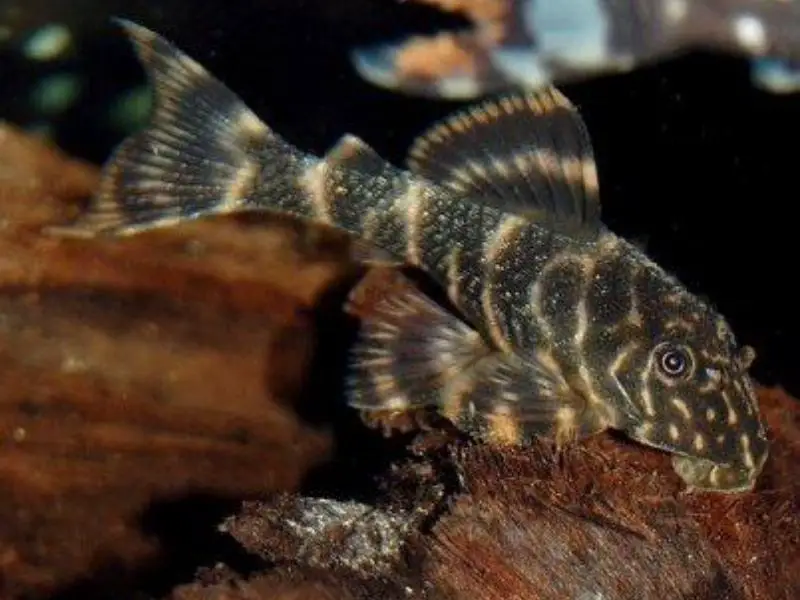
Clown plecos have wide, flat heads that taper down to their tails. This species has bright patterns that form in waves, stripes, and rings.
This fish is primarily interested in finding food, so it tends to ignore its tank mates. Such behavior makes the species comfortable and peaceful in community tanks or in independent settings.
Colors, Patterns, Fins, and Sex Differences
Clown plecos’ bodies are typically dark brown or black with patterns that come in red, yellow, white, orange, and gold. Their colors provide a beautiful contrast in tanks and camouflage in the wild.
As with many fish species, colors appear brighter in youth or in the wild, and dull with time.
High-quality food and care are the best ways to keep colors vivid. Outdoor tanks also make colors appear stronger.
Clown pleco dorsal fins share the same size as the pectoral fins, which is a rare and unique feature in fish. Good quality conditions will keep the dorsal fin fanned out.
Females and males are difficult to distinguish, but some differences include:
- Body Shape — Males have broader heads and a slimmer middle. Females have a slimmer head and wider middle
- Odontodes — The whisker-like bristles around the head and fins are longer in males
- Genital papilla — Males have more pointed, cone-shaped papilla, whereas females have a tube-shape
Typical Behavior
The clown pleco has a passive attitude toward tank mates and swims independently in search of food.
Rasping on wood, rocks, and caves fills most of the fish’s time while it drifts around the bottom of the tank. As the species is nocturnal, it becomes much more active in dim lighting or darkness.
Males guard the eggs after spawning, so if the fish is primarily staying around one cave or crevice, it may be breeding.
Clown Pleco Care & Tank Requirements
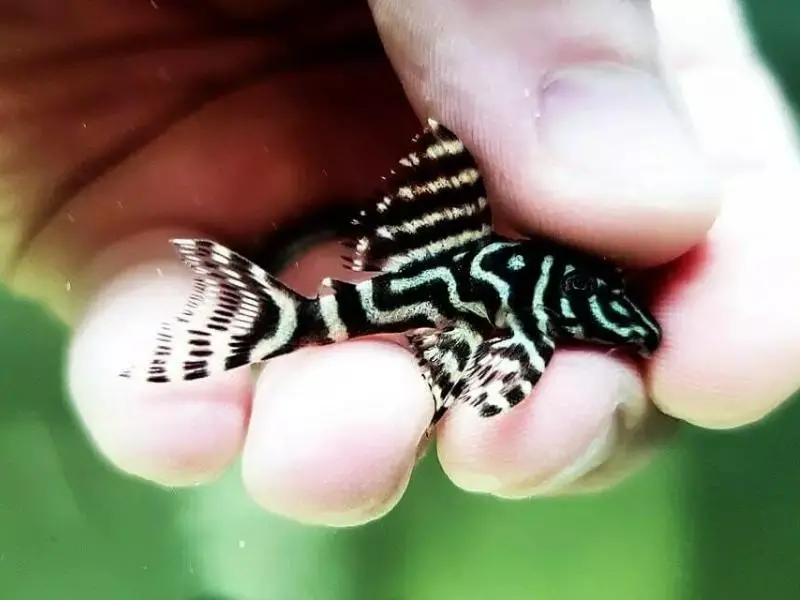
The clown plecos is easy to take care of and is great for beginners because it’s hardy and adapts to many tank set ups. Use fast filters to mimic the water conditions of fast-flowing rivers.
All woodeaters create more waste than typical fish, so regular water changes are needed to keep a clean environment.
The tank should have plenty of plants and caves for the fish to hide and breed in. Planted tanks make wonderful homes as they provide a changing landscape for fish to explore.
Habitat and Tank Requirements
The rivers in the Orinoco basin that contain clown plecos are fast-moving and filled with vegetation.
Due to dense forestation, decaying plant matter and roots fill the bottom of this species’ natural home. To imitate these conditions, driftwood and smooth rocks should be placed at an angle on the bottom of tanks for the fish to hide in and rasp on.
Having a smooth substrate at the bottom of the tank is important because clown pleco fish have soft bellies that can be easily damaged by sharp rocks.
Sand or smooth pebbles make the tank safe and also stop food from getting lost in the substrate. Taller tanks allow clown plecos room near the substrate while other fish inhabit the upper tank.
Tanks shouldn’t be put in direct sunlight, as bright light causes stress. If there are plants that require sunlight, make sure to provide plenty of shady places like caves or castles.
Tank Conditions
| Water type: | Soft, fresh water |
| Tank size: | 20 gallons minimum |
| Water temperature: | 73–82°F (23- 28°C) |
| Substrate: | Sand, smooth pebbles |
| Tank setup: | Driftwood, non-creeping plants, caves, castles |
| Acidity: | 6.0–8.0 pH |
| Water hardness: | 8–10 dGH |
| Filter: | Fast, mechanical filtration |
| Bubbler: | Recommended but not needed |
Clean the tank regularly and use mechanical filters to clear out any waste that is produced by the clown pleco. For all tanks, proper water testing and quality are important. Water testing kits are useful in monitoring mineral and chemical levels.
Tanks should also be large enough to give adequate space to all fish and prevent fighting or disease.
Disease
Hardy fish like clown plecos aren’t affected by specific diseases, but low water quality and unclean conditions make fish susceptible to freshwater illnesses. For example, pollution, nitrite, ammonium, and chlorine levels affect the health of fish and are common sources of illness for fish.
Ich is a common fish parasite and causes white patches on fish. Ich can infect entire tanks if not treated.
To treat ich, start by assuming that all fish in the tank are infected. Ich spores can be stored in sand and substrate and infect other fish.
Raising the water temperature can accelerate the lifespan of ich, but temperature changes can also add stress to fish and weaken their immune systems.
Salt can also be used to treat ich for specific fish species, but live plants cannot tolerate salt water.
Treatments for ich are the most effective and fast way of solving an ich outbreak.
Remove charcoal filters before treating the water, and begin treatment by removing one third of the tank water.
Add the recommended treatment amount and wait for 24 hours. Continue this cycle every 24 hours until all signs of ich are gone.
Tank Mates
Clown plecos do well when matched with many kinds of community tank fish. But if other fish have slime barriers, the clown pleco may “clean” them off and make the fish susceptible to disease.
Don’t place this fish in any tanks that contain large or aggressive fish that will cause stress or harass smaller fish.
For tanks with more than one clown pleco, increase the tank volume by 10 gallons per fish to prevent territorial behavior.
- Preferred Tank Mates: cory catfish, dwarf gouramis, angel fish, danios, ember tetras, rasboras, silver hatchet tetras, acaras, mystery snails and bala sharks
- Unsuitable Tank Mates: cichlids, betta fish, common plecos, red-tailed sharks, goldfish, and rainbow sharks
- Preferred Plants: Anubis, amazon swords, bogwood, hornwort, and mangrove roots
Diet and Feeding
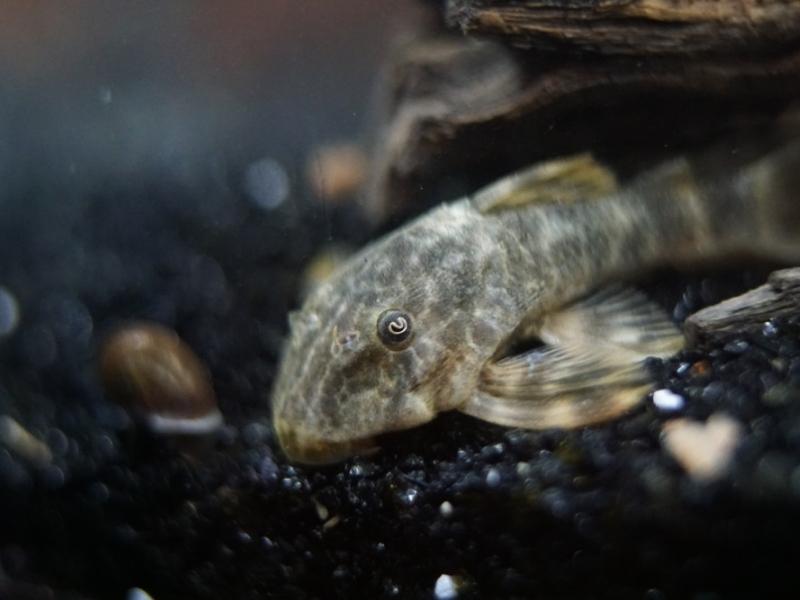
Clown plecos eat wood along with the algae and insect larvae that grow within it. A tank should have plenty of bogwood or mangrove roots for this fish to rasp on.
Give the fish wood that doesn’t break easily or contain dirt, in order to prevent unnecessary tank cleaning. Wood that can be scratched by a fingernail is too delicate.
Vegetables like zucchini, carrots, yams, and peas are delicious treats. If the tank has plenty of wood, the diet should only be supplemented once or twice a day.
Proteins like bloodworms and Daphnia can be given in moderation, once or twice a week, but lead to weight gain and health problems if fed in excess.
Make sure that the food sinks to the bottom of the tank so the clown pleco is able to find it and the food won’t be stolen by tankmates.
Breeding
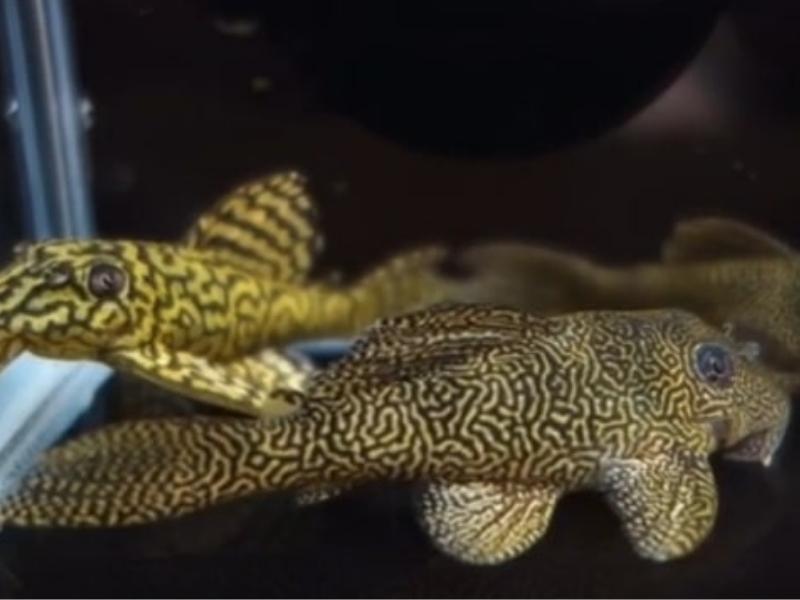
Breeding clown plecos is difficult, so providing the right environment can make the process much easier.
Clown pleco fish spawn during the rainy season, so this environment should be mimicked in a separate breeding tank.
Keep the water at a neutral level and lower the temperature to imitate fresh rainwater. Changes in water should be made slowly at 20% changes per week.
Provide small wood caves that the female can lay eggs inside and rasp on, and then wait for a few days and see if the female lays eggs in any of the caves.
When the eggs are laid, the water can be slowly warmed back to normal temperatures and the male will begin guarding the cave after fertilizing the eggs.
Feeding bloodworm to the fish in the week leading up to breeding will also encourage successful spawning.
The male fertilizes the eggs and protects them until they have hatched. Afterwards, the fry will be independent and can be introduced into a larger tank without their parents.
Should You Get a Clown Pleco Fish for Your Aquarium?
A clown pleco is a wonderful addition to any community or individual tank. Beginner and advanced aquarists enjoy the beautiful patterns and pops of color that the species provides.
Though these fish require more tank cleaning than other fish, they make up for the difficulty with long lives, reliable health, and the harmony that exists between plecos and tank mates.

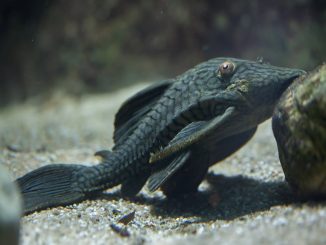
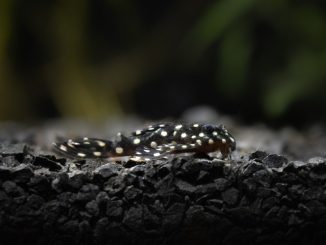
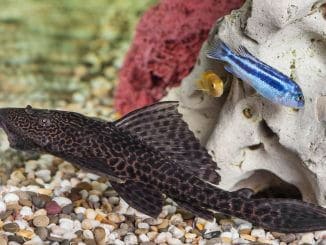
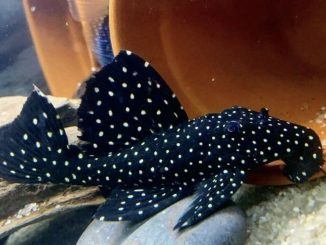
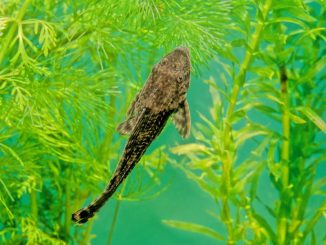
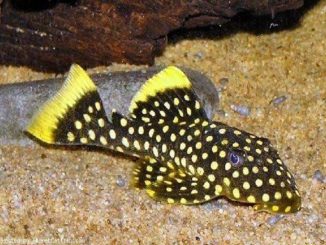
Be the first to comment